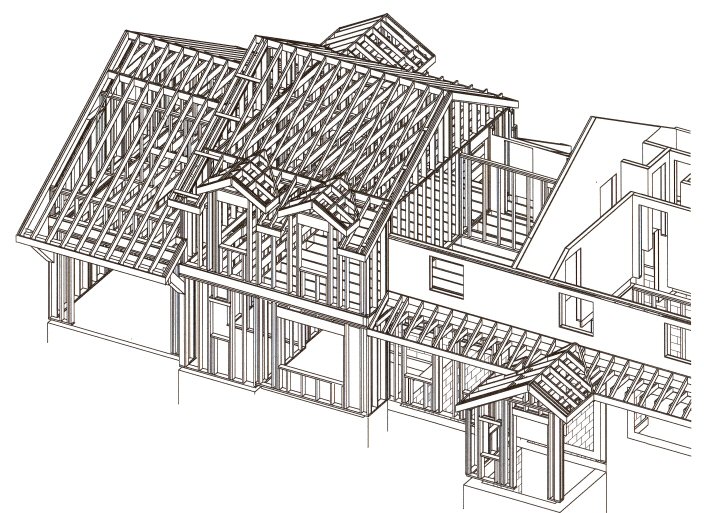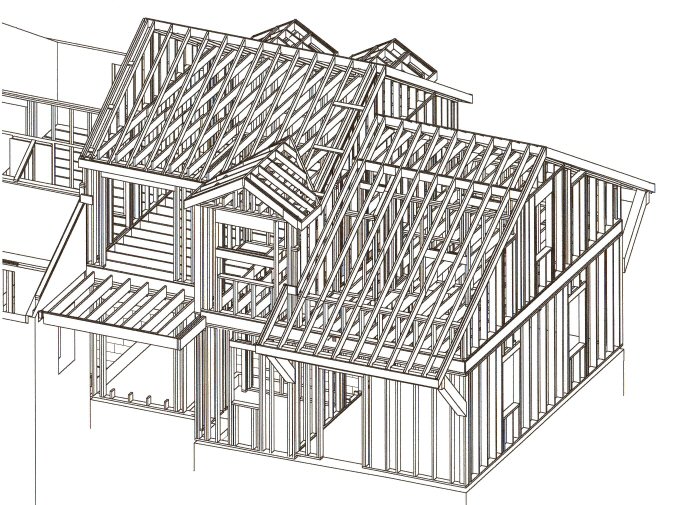|
|
- Take a cruise, or invest in
your property?
Why this question? Vacation
money results in pleasure, the same should, and can, apply to construction.
CDA believes when an Owner elects to spend "construction money," then
the experiance should result in enjoyment and satisfaction, not regret.
Construction horror stories, like most conflicts in life, are usually the
result of poor communication. Construction is unique because it is
people intensive.
Most projects will have minimum 10 to 20 people involved. They all
have their own agenda, only part of which is your project.
Construction is not a consumer product,
it is not like buying a car, it is like ordering a "custom" car, wth the additional
responsibility of describing how to build it. The Owner has a thousand
decisions to make and convey, and then watch to see if he/she was understood.
There are two primary horror stories. Ask Eric to explain them in
detail.
How can an Architect help?
The Goal: Communicating good information to all the people involved, and
seeking a fair price for good work.
- The Architect's Proposal: Project communication
begins with a well prepared agreement for archtectural services. It
will put forth a systemized program for the project, and describe the roles
and responsibilities of the major participants, the Owner, the Architect,
and the Contractor(s). Each party has their own initial expectations.
The only way to actually manage those expectation is if they are clearly defined.
Thus the Owner/Architect agreement serves as a project "guide book."
Contractors must have access to this guide book beginning with estimating
phases.
Sample Agreements for Architectural Consulting
 This is a template Agreement describing the boilerplate
language and roles in this process.
This is a template Agreement describing the boilerplate
language and roles in this process.
T his is
a template Description of Services and Fees and is then attached to
the Agreemenbt above.
his is
a template Description of Services and Fees and is then attached to
the Agreemenbt above.
- The Design Process: The Architect listens to the Owner, then
provides a visual, practical, solution using drawings and examples.
This becomes a dialogue between Owner and Designer, continuing until the graphic
result expresses what the Owner wants, and the budget can afford.
- Budget: CDA will assist the Owner select an appropriate Contractor,
who then becomes part of the team. This allows a budget to be set and maintained.
This is critical when financial flexibility is limited.
- Knowledge: The Architect provides the
Owner with a brain trust of information and resources. This is an opportunity
to ask questions and enjoy a professional willing to provide educational content
as part of the service.
- Construction Documentation: Technical
drawings, including specifications, are professionally prepared and distributed.
- How a quality Architect can affect your project.
- If you want a contractor to deliver quality work, then it only
makes sense to provide him with quality documents. When sloppy drawings
are provided, then the message communicated is "sloppy work is acceptable."
- Drawings help the contractor get the complete, accurate message
to all the subcontractors. This defeats the "whisper down the line"
syndrome. A picture is worth a thousand words in construction.
Either have an Architect provide a coordinated set of drawings for all to
use, or you depend on each individual trade providing their own field instructions
only as they need them, without helping any of the other trades know what
is happening or how their work coordinates with the other subcontractors.
- The drawings are the "contract". The agreement is the Owner
will pay a defined amount of money for a defined description of work.
- Good drawings save good money. Remember the old oil filter
commercial where they say "pay me now, or pay me later?" Ultimately all the
descriptive work provided by the Architect has to be done by someone, sooner
or later, and the cost will end up in the project somewhere. The better
and more complete the drawings are at the start, the better the initial estimating,
and ability to hold to that estimate. For contractors, time and production
efficiency are where money is made (the cost of the materials is the same
for everybody). There is an old saying "when you have ten minutes to
cut down a tree, spend the first nine minutes sharpening the saw." Good
drawings are the sharp saw.
- Project Administration: The Architect
can provide the Owner with continuing assistance during the execution of
the Work. The Architect's training and knowledge are available to the
Owner to interpret and clarify the design intent, review the progress of
the work, help evaluate options presented by the contractor.
A picture really is worth
a thousand words!
|
 Creative
Design
Associates,
Inc.
Creative
Design
Associates,
Inc.  This is a template Agreement describing the boilerplate
language and roles in this process.
This is a template Agreement describing the boilerplate
language and roles in this process. his is
a template Description of Services and Fees and is then attached to
the Agreemenbt above.
his is
a template Description of Services and Fees and is then attached to
the Agreemenbt above.

